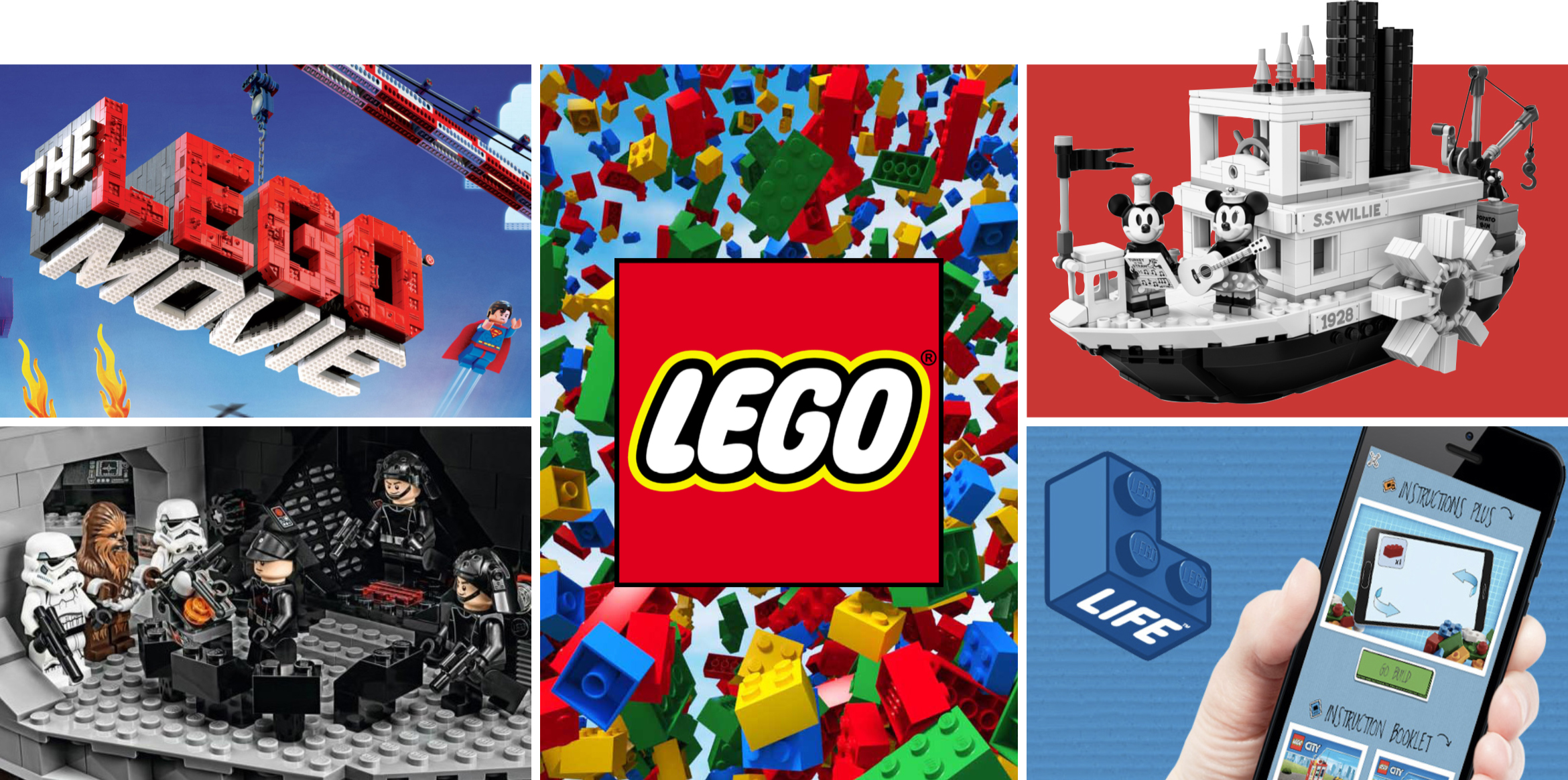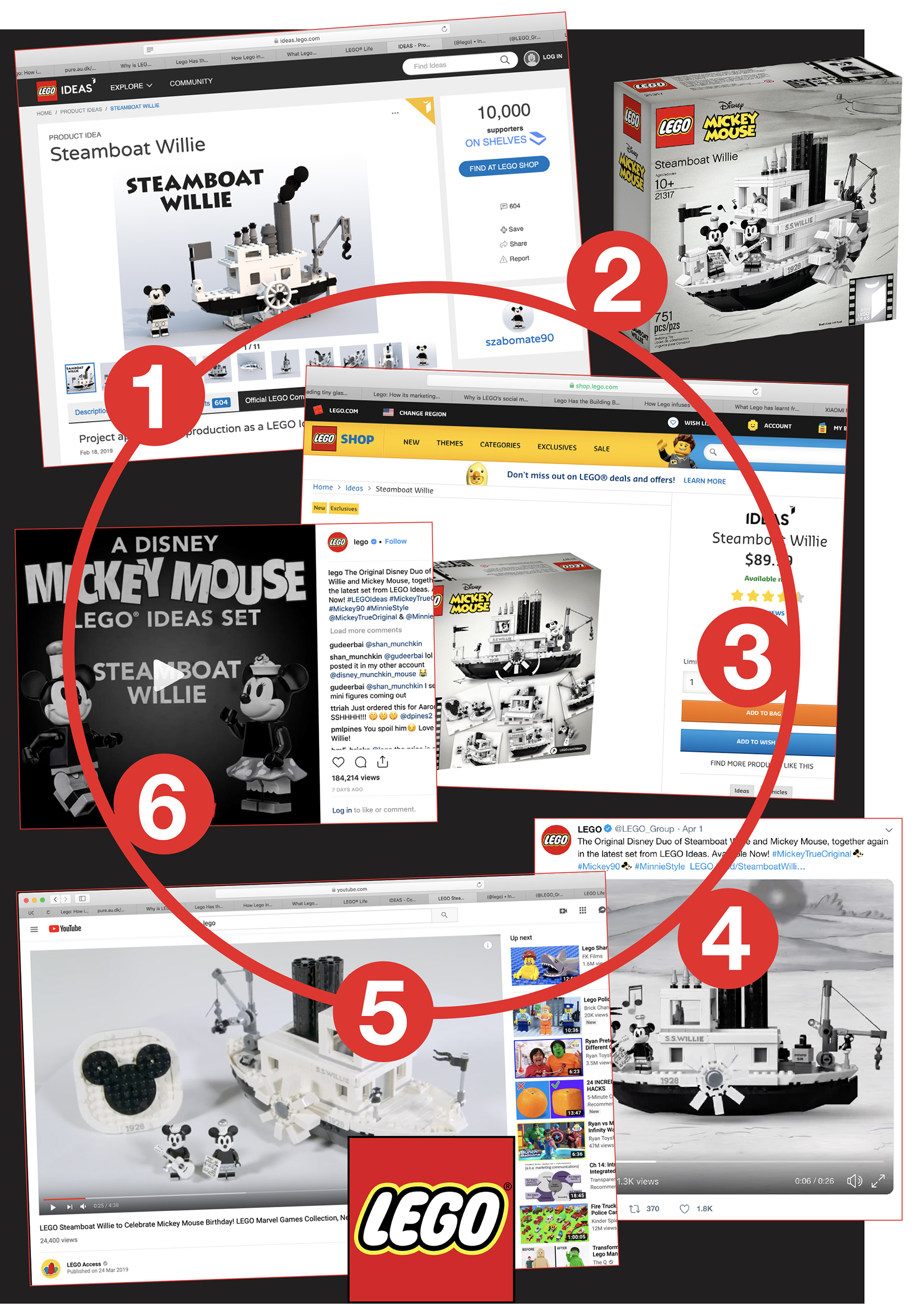Everything Is Awesome! A Toy Brand's Reinvention Through Integrated Marketing (09/04/19)

In the last decades of the twentieth century, Lego was regarded as a stagnant brand, one whose product was more highly valued than the brand itself. Yet in 2017 it was voted the world’s most powerful brand. What marketing revisions resulted in this seismic shift? Lego’s decision to abandon outdated marketing strategies and implement integrated marketing communications (IMC) was not only overdue, but also critical, to the organisation’s success in establishing brand resonance with an audience young and old, and to remaining relevant in our social media era.
IMC is a contemporary model that proposes that everything a brand does and says, along with planned forms of communication, contribute towards consumer perceptions of the brand. Therefore brand messages should be carefully managed across marketing platforms to ensure cohesion. IMC developed in response to an increasingly fragmented media arena in which the growth of social media encouraged a consumer appetite for immediacy of information, and a growing need for brands to be held more socially accountable.
Whilst for most adults Kronkiwongi might be a meaningless word, for the marketing and creative teams at Lego, it’s rich in meaning. It represents anything a child can imagine and build with Lego bricks. And it equally symbolises the core elements of Lego’s IMC – particularly their social media. These elements are (1) the need to play and build together, and (2) pride of creation, and are at the heart of Lego’s mission to ‘inspire and develop the builders of tomorrow,’ predominantly by encouraging fun. These desires are Lego’s unique value proposition, one that has resulted in a global community of fans of all ages, whose creative output has been leveraged by the organisation to benefit the brand.
In a strategic partnership with Facebook, Lego targeted a pre-teen audience and their mothers, and proposed pure creative freedom. The outcome – positive emotional brand resonance that will carry through into these children's adult lives.
Management of IMC is at the core of brand orientation, which can foster strong relationships between stakeholders and a brand (Lego’s social network community of millions is testimony to this), resulting in growth to an organisation’s profits. Brand orientation, when focused within an organisation, ensures employees engage with brand values, resulting in a consistent message being communicated both internally and externally.
In wanting to inspire and develop, Lego is not only hoping to shape consumer perceptions, but also to forge a fun and rewarding brand resonance, making Lego about more than simply bricks. This resonance – an emotional connection at the apex of Keller’s brand equity pyramid – refers to the relationship consumers have with a brand, their associations thereof, and their ability to recall it in different situations. For Lego, establishing a strong emotional resonance has meant that keeping things fun and engaging must be the overarching theme across all of the brand’s digital and social media output.
This came with it’s own challenges. Lego is primarily a children’s toy, but many social networks (like Facebook, Instagram and Twitter) impose a minimum age of thirteen on users. When strategizing which digital and social platforms to embrace, Lego not only had to find other platforms (like YouTube, Lego Life and Lego films) to target children, but also realised the importance of targeting their parents and adult Lego fans, well aware that this audience not only has the spending power, but that its nostalgia for the product plays a significant role in determining purchasing decisions with regard to children.

An example of Lego's IMC: Steamboat Willie, based on a vintage Disney cartoon, was (1) designed by a community member on Lego Ideas. Having gained 10 000 likes, and subsequently approved by Lego, the organisation puts the concept into production (2). It's available for purchase on their website (3), and cohesively marketed on (4) Twitter, (5) Lego's YouTube channel and (6) Instagram. (Images: Lego's social media platforms; graphic: Martin Jacobs)
Lego’s key digital and social media platforms include:
YouTube (7m subscribers): With over 30 million unique users monthly, this is Lego’s broadest reaching platform, therefore the ideal one in which to communicate its fun value proposition. Lego has created segmented channels for each of its product ranges, with unique content, ranging from how-to-build videos to mini ‘webisodes’, per channel. YouTube is Lego’s primary ‘inside-out’ marketing platform, providing entertainment to children and adults, and therefore, because of its enjoyment factor and lengthy engagements, has high emotional resonance.
On Facebook (13m followers), Instagram (3.9m followers) and Twitter (575 000 followers) Lego targets adults, engaging users by broadcasting content marketing, sharing user-generated content, and, in the case of Twitter (another segmented platform with multiple handles), responding to customer service queries. As social platforms, Facebook encourages a reciprocal relationship (Lego’s Kronkiwongi campaign targeted 24 million Facebook mothers, resulting in a 61% increase in engagement on the brand’s Facebook page during the campaign) and is thus the most engaging of the three, whilst Twitter is more informative.
Both Lego Ideas (1m adult community) and Lego Life (targeting children below thirteen) are online communities created by Lego, demonstrating the brand’s marketing ingenuity. Both are platforms promoting user-generated content where community members can post images of their own creations, and like or comment on others (an ‘outside-in’ mechanism allowing Lego to research its consumer), therefore both encourage high interactivity. With Lego Ideas, the brand leverages incentivised crowd-sourcing – any member’s design reaching 10 000 likes is considered for production, and if selected, the member receives 1% profit of sales of that product (as a fan, to be ‘designing’ for Lego offers the ultimate emotional resonance).
It is evident that by implementing contemporary marketing methodologies, and making the brand about having fun, Lego has kept its brand, created at a time when marketing was thought of very differently, relevant and resonant with a widespread global audience. Through appealing to consumer emotion, and doing so with a cohesive message (which advocates creative freedom through fun) across numerous digital and social media platforms, Lego engages with its audience, and instils in it the brand’s drive to inspire and develop creative thinking.
Martin Jacobs
(module 6, assignment 6.7)
Bibliography:
Handley, L. How Marketing Built Lego Into The World’s Favourite Toy Brand. Available: https://www.cnbc.com/2018/04/27/lego-marketing-strategy-made-it-world-favorite-toy-brand.html (2018, April 27)
Beer, J. The Secret To Lego’s Social Media Success Is In The Creative Power Of Crowds. Available: https://www.fastcompany.com/90330792/how-game-of-thrones-redefined-hbo-and-prestige-tv (2017, June 20)
Ratcliff, C. Why Is Lego’s Social Media Strategy So Outstanding?Available: https://econsultancy.com/why-is-lego-s-social-media-strategy-so-outstanding/ (2014, June 04)
Waldron, J. Lego Has The Building Blocks For Social Media Success. Available: https://etaileurope.wbresearch.com/lego-has-the-building-blocks-for-social-media-success (no date)
Howarth, B. How Lego Infuses Social Media Marketing With Play. Available: https://www.cmo.com.au/article/641387/how-lego-infuses-social-media-marketing-play/ (2018, May 23)
Quotation:
Mike Zeederberg: from Why Is Lego’s Social Media Strategy So Outstanding?
Comments
Post a Comment